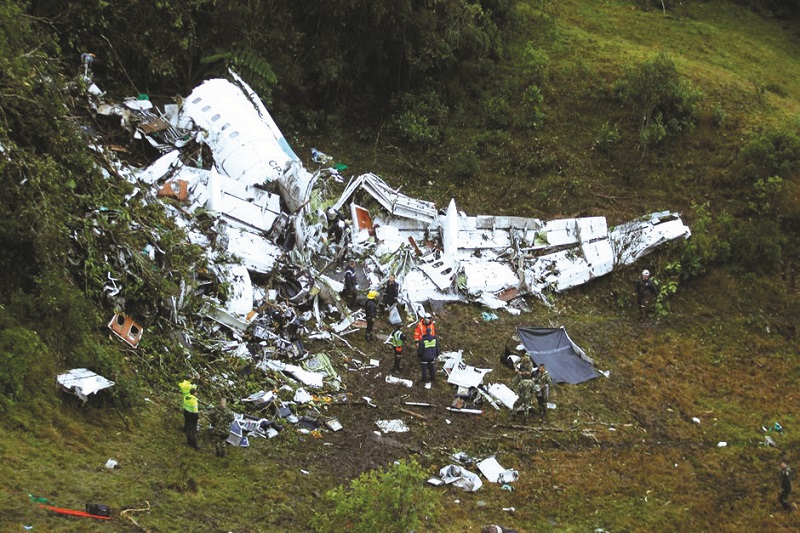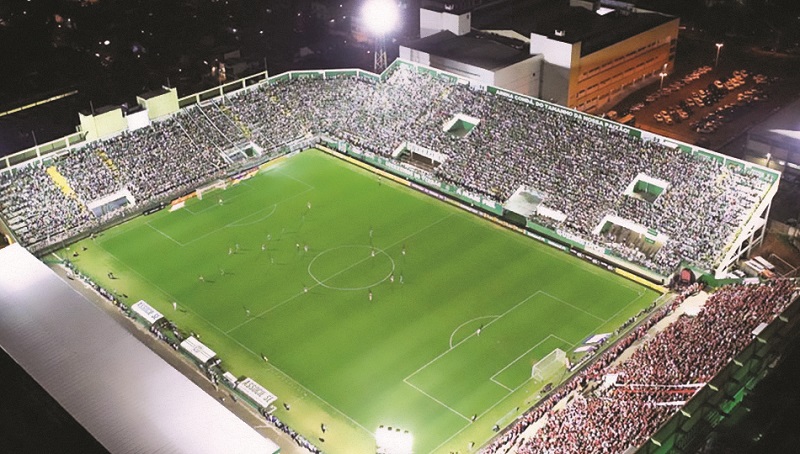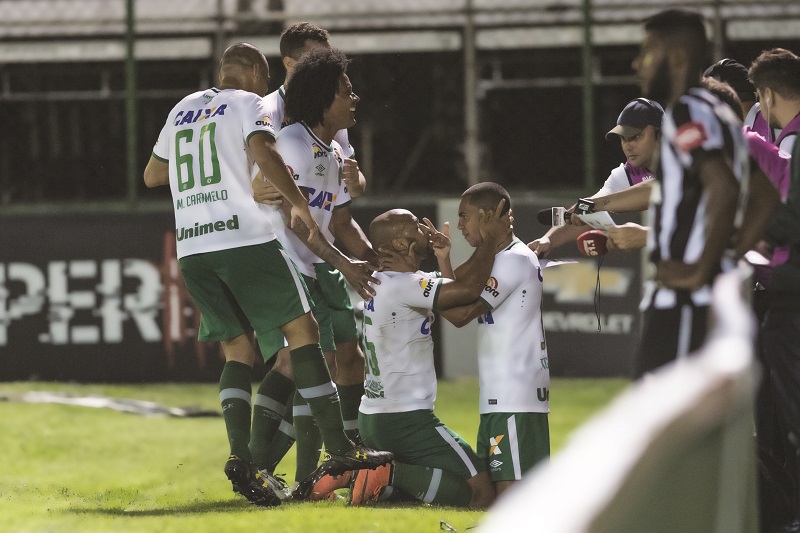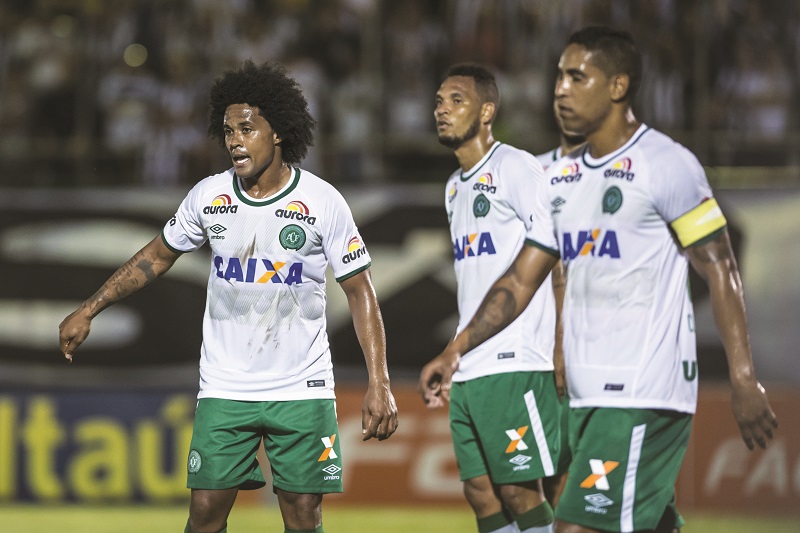This article first appeared in the Jan/Feb 2017 issue of WGM.
The tragic death of 19 footballers from tiny Brazilian club Chapecoense while traveling to play the biggest game of their lives has left an entire continent in mourning. So where to now for this devastated team and town?
Chapecoense’s players were on their way to play the biggest game in the Brazilian club’s history late last year when their flight crashed into a mountain, killing 71 people on board. For a relatively small club that was mostly unknown to the football world outside of South America, a Copa Sudamericana Final was a genuine “dreams come true” moment. But the players never arrived.
One of only six crash survivors, Chapecoense fullback Alan Ruschel said, “Only God can explain why I survived the accident.” Ruschel lost most of his memory of the accident in the immediate aftermath but little by little it started coming back. He remembered how club director Cadu Gaucho asked him to move to the front of the plane instead of sitting at back so that all the journalists could sit together. He refused, but minutes before the crash his best friend, goalkeeper Jackson Follman, grabbed him and dragged him to the seat next to him – a move that literally saved his life. Ruschel and Follman were the only two footballers to survive although Follman had part of his leg amputated.
Despite the promise of a bumpy flight ahead, Ruschel, Follman and the rest of their teammates had been joyful when they boarded the deadly LaMia Flight 2933. Videos uploaded onto social networks at the time showed players joking around with club directors, coaching staff and crew before they took off from Santa Cruz de la Sierra, Bolivia, en route to Medellin, Colombia. A direct flight from Brazil to Colombia was rejected by the Brazilian Civilian Aviation Authority for reasons that remain unclear.
Chapecoense, the result of a merger between two amateur teams in 1973, has enjoyed a tremendous rise in recent years. Since 2009, the club has made its way up from Serie C to Serie A, the top flight of the Brazilian domestic league, where it competes against world famous clubs like Palmeiras, Santos and Corinthians. They have been making steady improvement in the top flight too, from 15th in 2014 to 14th in 2015 and 9th this season with one game left to play.

71 people died in the crash of the LaMia flight
But it was on the continental front that they had made the biggest progression. In Copa Sudamericana – South America’s equivalent to the Europa League – this season, Chapecoense knocked out prestigious clubs like Argentinian side Independiente, Colombia’s Junior and another Argentine giant in San Lorenzo to reach the finals.
Located in the small town of Chapeco in the south of Brazil, which has a population of 200,000, the club’s average home attendance is barely 7,000 and their run had been compared to the miracle of Leicester City in England. Instead, the death of 19 players basically wiped out the team on the eve of Chapecoense’s greatest moment.
Sadly, the miracle-turned-tragedy may have been caused by human greed. It has since been revealed that the pilot of the Bolivian-run plane is believed to have taken off without enough fuel for the flight.
CNN reported that the charter plane’s pilot told air traffic controllers the aircraft was, “in total electrical failure and without fuel” moments before crashing, according to audio released to the Colombian media in December. Bolivian authorities suspended the airline’s operating license and replaced the management of its aviation authority to ensure a transparent investigation.

Chapecoense’s home ground, Arena Condá
On a brighter note, the tragedy has brought the footballing world together.
The whole football world showed solidarity with the club in the aftermath of the tragedy. Atletico Nacional, the Colombian club that Chapecoense was supposed to play in the final, asked South American football’s governing body CONMEBOL to award the title of Copa Sudamericana to Chapecoense. It was the first continental title for the small club, with Atletico Nacional receiving the “CONMEBOL Centenario Fair Play Award” for their gesture. Spanish champions Barcelona has also invited Chapecoense to play a friendly match at its famous Nou Camp in mid-2017.
In Brazil, at least four major clubs have offered to lend players to Chapecoense free of charge for the entire 2017 season – Palmeiras, Corinthians, Santos and Sao Paulo. In a joint statement, the clubs requested the Brazilian Football Confederation give Chapecoense immunity of sorts to keep the club in the first division for the next three seasons, allowing it time to rebuild.

Chapecoense had qualified for their first Copa Sudamericana Final
In the meantime, the Brazilian authority extended the national mourning period from three days to 30 days and cancelled all football activities during that period. The fallen heroes, including football players, club directors, coaching staff and journalists, were transported back to their home with a military guard of honor.
But at some point, Chapecoense will return to the football stage, with their final game of the season now scheduled for 29 January at their home ground. It promises to be a defining moment in the next chapter of the club’s history.







